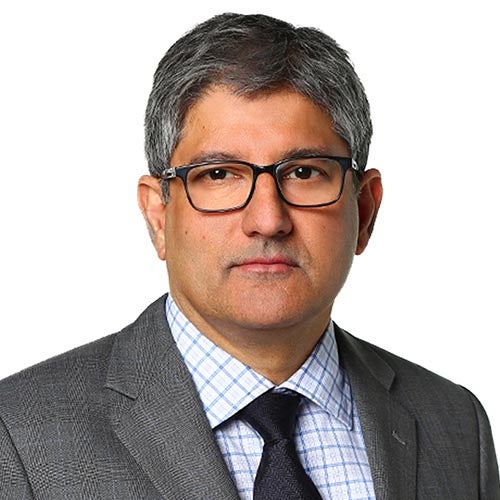
"We believe that emerging markets local currency debt features differentiated alpha and income generation potential with meaningful client portfolio diversification benefits."
Hemant Baijal, Fund manager

Target income generation and long-term growth, while gaining exposure to the diversification benefits and relative yield enhancement offered by emerging markets.
Why this fund?Historically, emerging market local bonds have provided attractive relative yields and access to strong developing market sovereign, country debt exposure. We harness manager skill, attempting to outperform the market while simultaneously minimising the downside risk associated with this asset class.
No market or region can be viewed in isolation. Issues like trade and international relations must be taken into consideration. That’s why we combine top-down macro analysis with bottom-up country research.
We develop our macroeconomic outlook and incorporate the robust linkages between developed and emerging market economies to better inform our global perspective.
We then allocate risk based on this macroeconomic outlook over a 9-18 month investment horizon across interest rates and foreign currencies.
We believe that, given the relative volatility of the asset class, an asymmetric approach to risk management and budgeting can provide investors with an overall smoother investment experience over time.
We look to reduce volatility throughout the emerging market cycle. As such, on an ex-ante basis, we do not allocate more risk (volatility) than that of the reference benchmark while deploying the following loss-mitigation strategy:
As fiduciaries, we incorporate ESG factors into the investment process, because we believe it is an important risk management tool in emerging markets.
To better understand ESG factors, we employ a qualitative and quantitative framework, carry out research trips, and engage directly with local experts. These include policymakers, senior government officials, central bank representatives, state administrators, politicians, non-governmental organisations, and private sector representatives.
Position sizing is adjusted taking ESG factors into consideration, assuming financial metrics and valuations support the stated investment thesis.
ESG risks are also considered and actively managed, and the fund is classified as Article 8 under the Sustainable Finance Disclosure Regulation (SFDR).
The investment concerns the acquisition of units in an actively managed fund and not in a given underlying asset.
Any investment decision should take into account all the characteristics of the fund as described in the legal documents. For sustainability related aspects, please refer to https://www.invescomanagementcompany.lu.
Hemant Baijal, Wim Vandenhoeck, and Jason Martin are responsible for managing the fund. They are members of our Emerging Markets Debt Team, based in New York. Our EM Debt team offers full-spectrum coverage across hard and local currency markets, with Portfolio Managers averaging 25 years of industry experience. The team’s structure fosters a comprehensive perspective by enhancing collaboration and connectivity across IFI’s global EM platform, including credit research professionals and region-specialized economists to help inform an interconnected global perspective.
Emerging market debt is the fixed income debt that is issued by countries with developing economies as well as by corporations within those nations. It includes local and hard currency.
Emerging market (EM) debt has delivered strong performance in 2025, demonstrating resilience throughout the global monetary policy cycle, despite elevated geopolitical uncertainty. Policy uncertainty and slowing US economic growth have challenged the narrative of US exceptionalism, contributing to a softening US dollar and creating a more favorable backdrop for EM debt, in our view. Looking ahead, we remain constructive on EM assets, supported by generally attractive valuations and compelling alpha opportunities across EM interest rates and foreign currency.
Local currency bonds are debt securities issued by sovereigns or corporates in their local currency. The return drivers come from local yields, capital appreciation (changes in yield curve or credit standing) and FX. Since countries can be at different stages in the economic cycle, interest rates and returns can be uncorrelated to those in developed markets. Hard currency bonds are debt securities issued by EM sovereigns or corporates in a foreign currency – usually in a developed market currency, such as the USD or Euro. Many low income, weaker developing countries, “frontier markets” are incented to issue in hard currency to attract foreign investment (perceived as less risky if issued as a USD or Euro asset) versus issuing in their local currency.
You can invest in emerging market debt by either investing in actively managed mutual funds or exchange traded funds (ETFs). Invesco offers a broad range of actively managed funds and ETFs.
The integration of ESG into investment practice is rapidly evolving for fixed income investors. There is growing regulatory interest and market demand for sustainable investments. In addition to a growing preference for some investors.
The return drivers come from local yields, capital appreciation (changes in yield curve or credit standing) and forex (FX).

Unlike market-cap indices, which naturally concentrate exposure in the largest companies, Equal Weight strategies assign the same weight to each constituent. Invesco’s Equal Weight UCITS ETFs offer access to this approach across both global, US and European markets.

We are excited to announce a new partnership designed to help investors realise the full return potential of the global economy by unlocking new opportunities in private markets.

Welcome to our Tactical Asset Allocation hub. Here you’ll find a selection of the most recent research from Invesco Solutions. Read our latest analysis that covers market strategy and opportunities across various asset classes.


Let us know using this form and one of our specialist team will quickly get back to you.